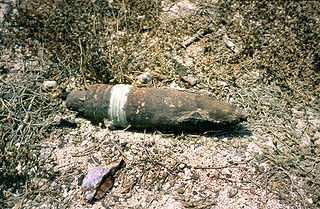Unexploded ordnance (UXOs), meaning the bombs, rockets, shells, and other explosive munitions left scattered on battlefields and bases after conflict, have been a major concern in post-war environments since WWI. Now, the latest conflict between Islamist militants and the government (supported by their French allies) in Mali is spreading this deadly legacy across the country.
According to UNICEF, over fifty people have been injured by UXOs since April last year, with a significant majority being children. Hector Calderon of UNICEF describes that in Mali UXOs are “all over the place; on the streets, close to schools and health centres.” UNICEF estimates that since the French military joined the civil war, the number of UXOs has doubled.
“Explosive remnants of war are a direct threat to people’s lives and limbs, but also adversely affect livelihoods and disrupt daily routines. The presence of such dangerous items is an obvious source of fear and distress that prevents affected communities from resuming normal lives,” said Marc Vaillant, programme officer for the UN Mine Action Service (UNMAS) in Mali.
…
“Civilians feel the threat of these explosives,” said Calderon. “One mother was afraid to bring her child to a health centre because she was scared the health centre was contaminated with ammunition. It’s clear that the left-over ammunition has impacted the lives of these communities.”
The problem with UXOs is often two fold. First, because most UXOs come from either munitions that failed to detonate on impact or (often unmarked and recorded) landmines, organizations attempting to secure areas from the danger have little to no information on where to look. UXOs can be underground, in buildings, even in trees (from airdropped munitions or artillery). Finding them, let alone safety disarming them, is an incredibly time consuming and labor intensive task.
Second, UXOs can lay hidden for years, even decades, before they are discovered — often by children. Furthermore, the longer a UXO sits, the more unstable it’s explosive contents become, meaning that they are even more dangerous to move or touch.
For these two reasons, one of the most effective tactics for protecting populations against UXOs is educating civilians both about how to recognize UXOs and what to do when they discover one. The bitter truth is that these lessons will become some of the most important for Malian civilians for decades to come.
Photo credit: Tom Oates
